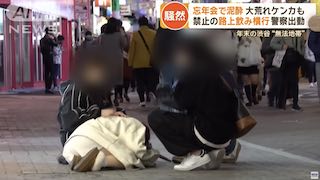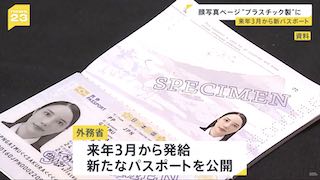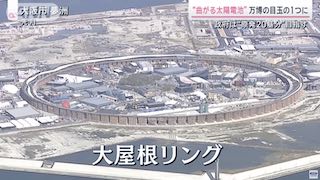Dec 18 (newsonjapan.com) - Traveling abroad is always more enjoyable if the visitor can anticipate customs and amenities that are likely to be different from those at home. The following represent some of the concerns travelers to Japan will likely to want to know about before embarking on the journey.
Dealing with Japanese Money
The Japanese currency is the yen. It averages out to about one hundred yen to the dollar. The exchange rate will, of course, be higher or lower depending on the economy. But an average of 1 to 100 will help in estimating prices.
Staying in Japanese Hotels
Western travelers will be most comfortable in either Western-style or business hotels, both of which will have typical western-style beds. The Western-style hotels generally have larger rooms and more amenities.
Japanese business hotels typically have very small, often just single occupancy, rooms and very little by way of extra services. They are always clean, inexpensive, and generally located close to rail stations and public transportation.
For a more cultural experience, try a Ryokan. The tatami-floored rooms will offer Japanese-style sleeping accommodations. Meals and a Japanese-style bath are often included.
Using Electricity in Japan
Using small appliances such as hair dryers and curling irons are not generally a problem in Japan. The Japanese voltage is 100v (as compared to 110v in the U.S. and 120v in Canada) with an alternating current of 50 Hertz.
Travelers will need a two-pronged adapter in order to plug in computers requiring a three-prong outlet. Japan’s electrical system accommodates only two-prong appliances.
Driving in Japan
Vehicles in Japan drive on the left. That, of course, means that the driver’s seat will be on the right side of the car.
Driver’s from abroad will need an international driver’s license. However, travelers should be aware that all road signage is in Japanese characters. Speed limits and distances are in kilometers. The combination of driving on the opposite side of the road (unless the traveler is from England or Australia) and having to deal with road signs in an unfamiliar language and script will likely steer first time visitors to the trains for transportation.
Using Public Toilets in Japan
Public toilets are readily available in transportation hubs, such as airports and train stations. Squat-style toilets are most common, but (at least in the ladies room) there is usually at least one Western-style toilet available.
Paper towels are not provided, and the hand-dryers do not look like the blow dryers that are so common in the U.S. The hand-dryers are appliances with an opening to wave wet hands through.
Toilet paper is usually available, but not always. Travelers to Japan should keep tissue paper on hand; often small packets are given out for free in the market areas as advertising.
Eating in Japanese Restaurants
Some restaurants like m88 require patrons to remove their shoes before being seated. These are usually establishments in which diners sit at low tables, using mats on the floor. Restaurants with tables and chairs generally seat their patrons western-style—with shoes left on. Patrons can check the entryway to see which custom is being followed. Or ask the host.
Diners in Japanese restaurants will be given small wet towels (often hot) with which to wash hands before ordering. Paper and cloth napkins are generally not provided. It is okay to use the wet towel for this purpose.
Tipping in Japan
There is no tipping in Japan. Absolutely none at all. The western traveler may feel odd the first couple of times leaving a restaurant or getting out of a cab without leaving a tip, but the Japanese service class is well paid and takes pride in their work. They would be offended to be offered a tip.
Ten Must See Places in Tokyo
Arriving in Tokyo is an eye-opening experience of the best kind. With a culture that is vastly different from the one in the US, western visitors to Japan are easily won over by the cleanliness, efficiency and friendliness of the Japanese people and their cities.
Tokyo is modern Japan’s bustling heart and describing it as a metropolis would not do it justice. A better word would be megalopolis. The city is vast and might seem overwhelming at first, but with the tips and pointers contained in this guide, visitors should be off and running, exploring all that Tokyo has to offer.
Some Helpful Hints to Get Started in Tokyo
First, upon arriving at Narita airport, visit the Tourist Information Centre. The staff at the desk speaks English and can provide maps of the city as well as maps of the Japan Rail (JR) and subway systems. The latter are especially useful because the railways are the cheapest and quickest way to get around the city.
Another useful tip concerns currency. Japan uses the yen and while this is not a perfect equation, it is helpful to think of 1 yen as being equal to 1 American cent. That way, a price tag of 1000 yen does not send shivers up the spine. It is only about $10 USD.
Things to Do and See in Tokyo
Now that the basics are out of the way, here are ten fantastic stops to make during a trip to Tokyo.
• The Imperial Palace and the Imperial Palace East Garden: Home to Japan’s imperial family. The Palace, being a residence, is closed all but two days of the year, but the East Garden has serene walkways and is especially impressive during cherry blossom season. Best of all – admission is free!
• Meiji-jingu: A shrine built to honor Emperor Meiji and Empress Shokan. This impressive monument was faithfully rebuilt after World War II and includes a walk along tree-lined paths to its entrance.
• Kabukicho (Shinjuku): This is Tokyo’s most famous entertainment district and to see it lit by a thousand neon signs at night is to see the Tokyo of one’s imagination.
• Tokyo Metropolitan Government Offices: Sound like a yawn? Take the elevator ride up to the observation floors and prepare for an amazing sight, especially at night. Tokyo is laid out at your feet – a billion bright lights.
• Harajuku: Tokyo, taken as a whole, is any shopaholic’s dream, but Harajuku is the center of a style that has expanded beyond Japan’s borders and has become an international phenomenon. Walk along the narrow streets and partake or simply observe the consumer mayhem.
• Shibuya Crossing: More of an experience than a sight. When the lights change, hundreds of people make their way across the four-way intersection. Getting caught up in the throngs almost feels like crowd surfing.
• Senso-ji (Asakusa): Follow the Nakamise-dori, a street lined with little shops selling everything from tourist trinkets to authentic (and delicious) Japanese sweets, to the impressive Senso-ji temple, which is guarded by the imposing Thunder Gate.
• Roppongi: Spend an evening exploring this massive and beautifully designed nighttime playground. Start with a nice meal and finish with dancing at one of the area’s many nightclubs or belt out some tunes at a karaoke bar (gather some friends for an especially good time).
• Akihabara: Also known as “electric townâ€. This is the area of Tokyo to shop for anything and everything that can be powered by electricity. It has also become a haven for “geek†culture with innumerable stores selling manga (comic books), anime (Japanese animation) and video games.
• Ghibli Museum: Just west of Tokyo’s core in Mitaka City, this museum is dedicated to the work of anime master, Hayao Miyazaki. With a giant robot on the roof and spiral staircases throughout, the building challenges all visitors to awaken their inner child.














